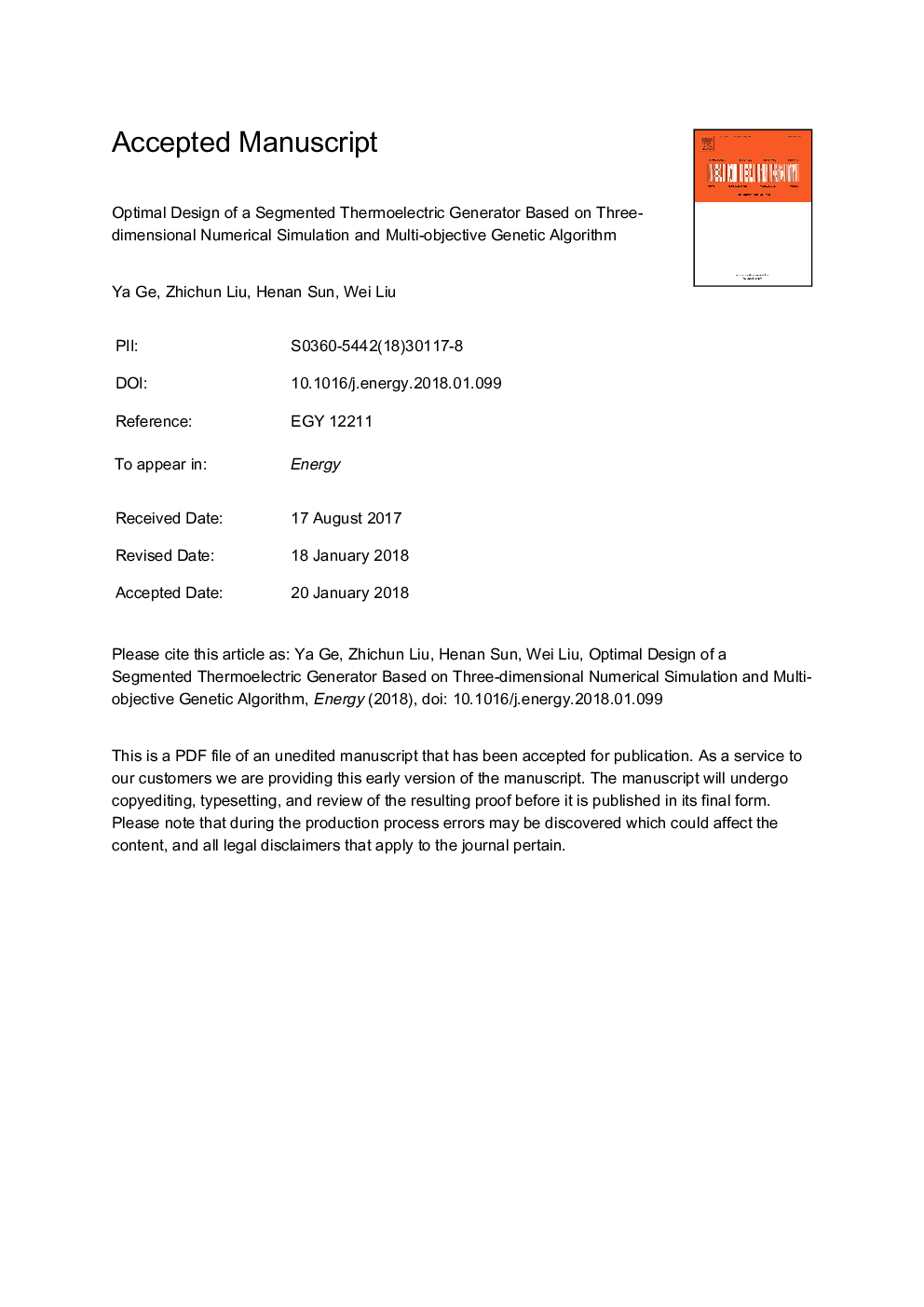| Article ID | Journal | Published Year | Pages | File Type |
|---|---|---|---|---|
| 8072268 | Energy | 2018 | 37 Pages |
Abstract
This paper proposes a general method to optimize the structure and load current for a segmented thermoelectric generator (TEG) module, where the bismuth telluride is selected as the cold side material, and the skutterudite is selected as the hot side material, respectively. Two objectives, minimum semiconductor volume Vâ² and maximum output power P, are simultaneously considered to assess the performance of the TEG module. All the simulation models to be optimized by the multi-objective genetic algorithm are established and solved by finite element method, where the Thomson effect, in conjunction with Peltier effect, Joule heating, and Fourier heat conduction are simultaneously considered. In order to achieve the ultimate optimal design, TOPSIS (technique for order preference by similarity to an ideal solution) is employed to determine the best compromise solution. The results of Pareto solutions show that Vâ² varies from 432â¯mm3 to 3868â¯mm3, while P varies from 5.523â¯W to 56.293â¯W, respectively. Meanwhile, optimal design variables are investigated to provide practical guidance for the industrial applications. The mechanism of performance improvement has also been explained in this work by comparing the optimal segmented TEG and the skutterudite TEG.
Related Topics
Physical Sciences and Engineering
Energy
Energy (General)
Authors
Ya Ge, Zhichun Liu, Henan Sun, Wei Liu,
